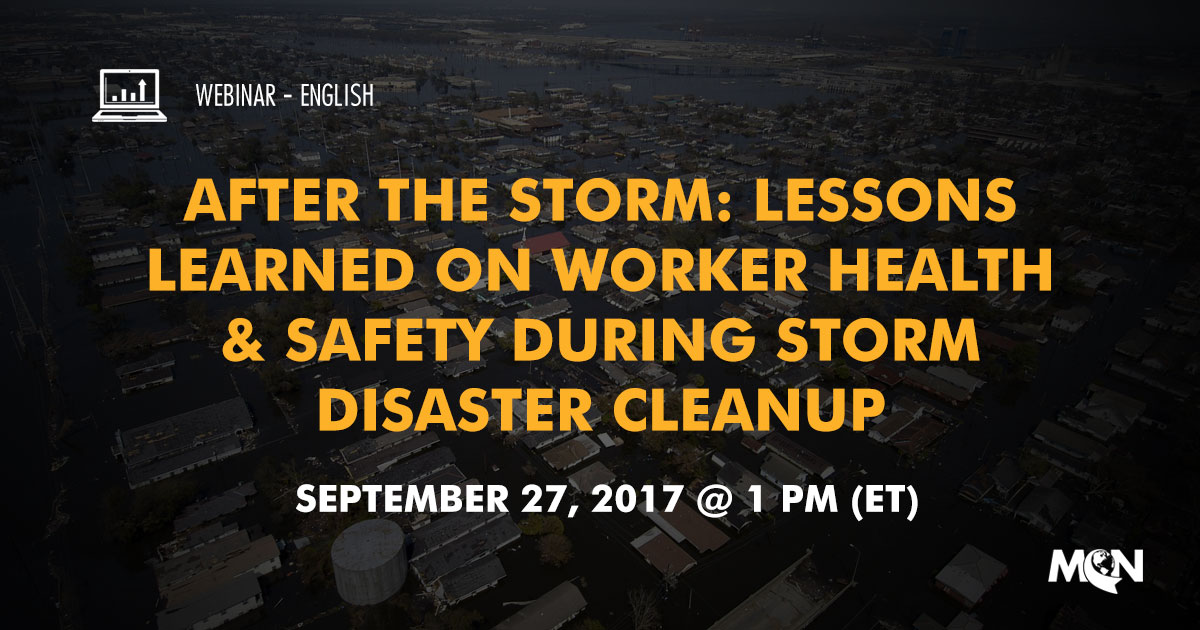
DATE: September 27, 2017, 1 PM (ET)
SPEAKERS:
- Joseph “Chip” Hughes, Jr., MPH, National Institute of Environmental Health Sciences
- Amy K. Liebman, MPA, MA, Migrant Clinicians Network
- Juliana Simmons, MSPH, CHES, Migrant Clinicians Network
- Recorded Webinar
- Presentation Slides
- Resources
Continuing Education Credit
To receive CME* or CNE credit after viewing this webinar, you must:
- Complete the Participant Evaluation associated with this webinar
- Send an email with your first and last name stating which webinar you completed to contedu@migrantclinician.org
Description
As families return to their homes in Houston as floodwaters from superstorm Harvey recede, it is a race against time. A suffocating smell already fills the living rooms, puddles remain in hallways, and spots of mold multiply quickly. Within days, the soppy lawns of neighborhoods are dump sites as workers begin gutting homes, pulling out molding drywall, damaged floors and ceilings, and wrecked furniture. In the process, these workers and many residents are exposed to mold, water contaminated with chemicals and waste, hazardous building materials, and vermin. Additional risks include working around unstable structures and carbon monoxide poisoning from generators operating in poorly ventilated spaces. Exposure to asbestos, silica and lead are also common for these workers.
Katrina, Sandy, Harvey, Irma: the names of the storms denote which communities ended up under water, but many of the stories of cleanup -- and the hazards involved -- are the same. With resilience and determination, communities will try to rebuild, but the rebuilding necessitates an immediate workforce ready for strenuous and dangerous jobs. Post-disaster recovery, cleanup, and reconstruction operations present numerous risks and dangers to workers. Many do this work without proper safety equipment or training on hazard mitigation.
In post superstorm recovery, what are the vulnerabilities workers face and what does this mean for worker safety and worker health? As clinicians and community health workers caring for this worker population, what are the key points we need to understand to care for those involved in clean up efforts and what can we do to help educate them to prevent injuries and illnesses?
This webinar brings together experience from previous natural disasters and offers resources that will help guide you. We will offer case studies to illustrate the hazards `and review ways that workers can protect themselves, including understanding their rights and responsibilities.
Learning Objectives
- Participants will be able to identify the most critical and common hazards encountered by workers and residents engaged in post-disaster demolition and reconstruction.
- Participants will be able to articulate the best strategies to educate workers and others about how to prevent injuries and illness during the clean-up following hurricanes and superstorms.
- Participants will be able to list at least three resources they can use to guide workers and residents during post-disaster demolition and reconstruction.